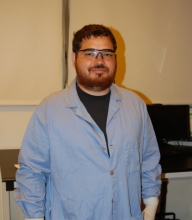
Major:
University:
Mentor(s):
Faculty Sponsor(s):
Faculty Sponsor's Department(s):
Project Title:
Project Description:
Organic materials for solar cells are a competitive approach to their inorganic counterparts because of their lower production cost and flexibility in design and synthesis. However because of the difficulty to achieve good crystallinity, organic photovoltaic compounds typically have lower charge mobility and thus require a bulk-heterojunction (BHJ) morphology to efficiently extract charge. The BHJ is a combination of an electron donor and an acceptor compound forming an interlinking bilayer. Due to the nano-scale of the BHJ, direct manipulation is impossible; thus in order to create an optimal BHJ, macro-scale manufacturing methods must be developed. In this paper we optimized the BHJ for organic small molecule F6 and its electron acceptor PC60BM, which required a systematic approach to modify device fabrication parameters and determine ultimate device electrical performance. The optimal blend ratio between F6 and PCBM was found to be 50:50 in both chloroform and chlorobenzene solutions. Optimal concentration of solutions was found with chlorobenzene solutions between 30 mg/ml and 35 mg/ml. Post fabrication annealing was found to consistently increase power-conversion efficiency (PCE) on devices that did not undergo annealing after solution film was deposited. Current testing suggests that annealing time of up to 40 minutes at 100oC on chlorobenzene solutions also increases PCE. These parameters yielded a peak PCE of 3.83%.
